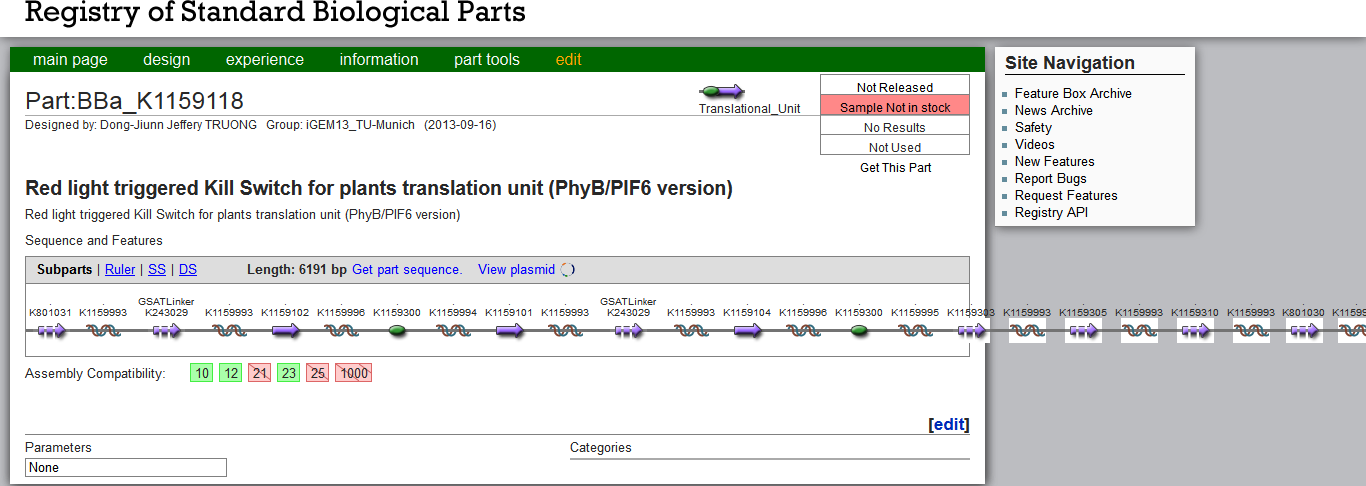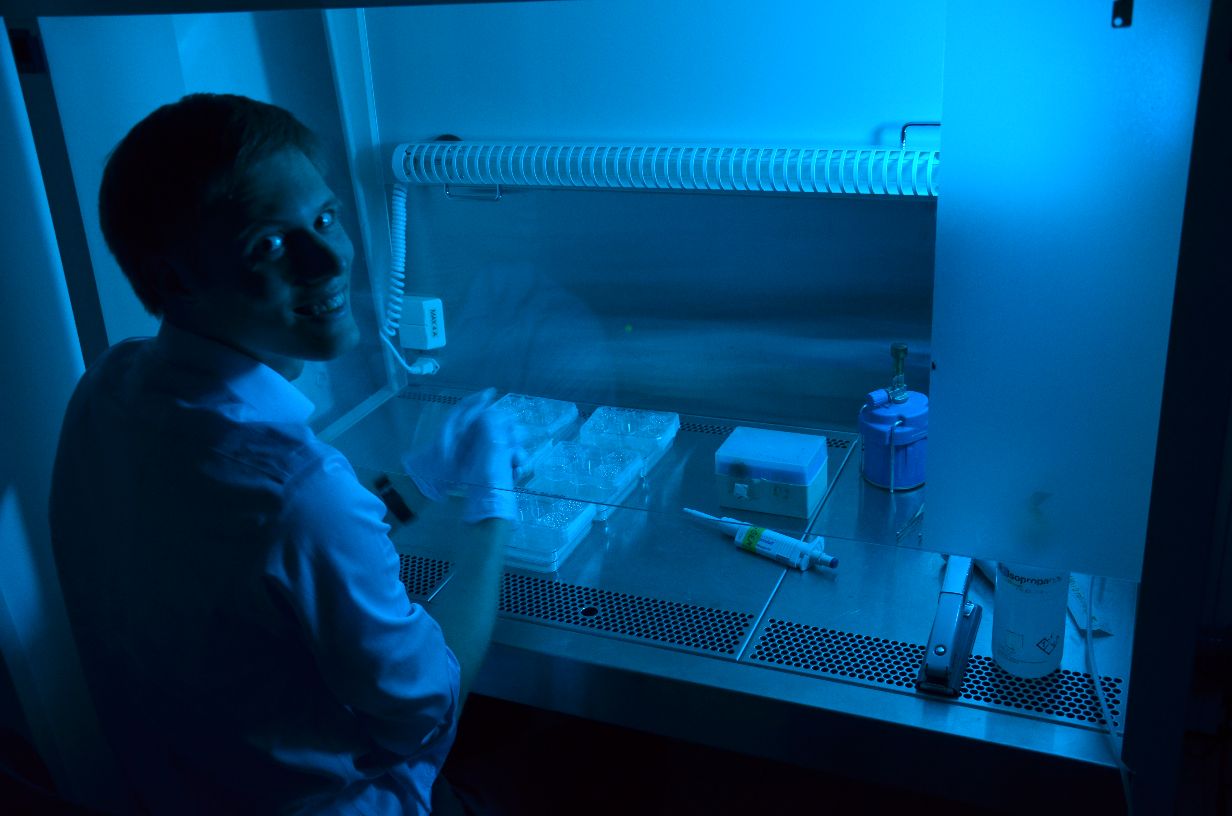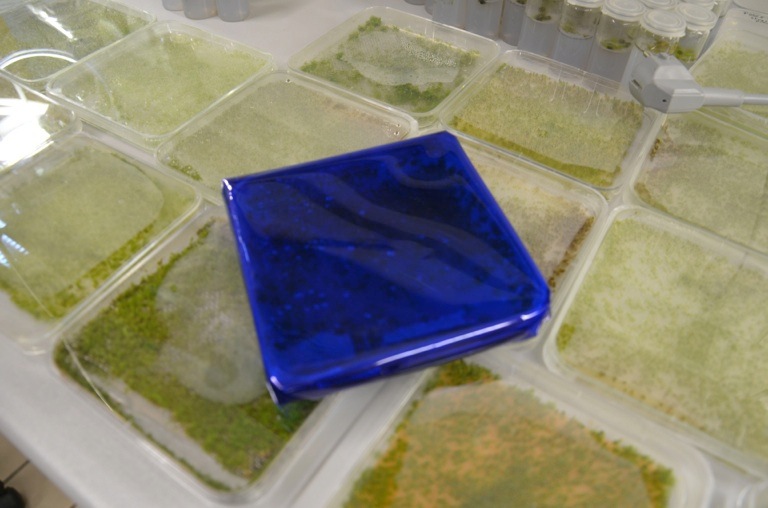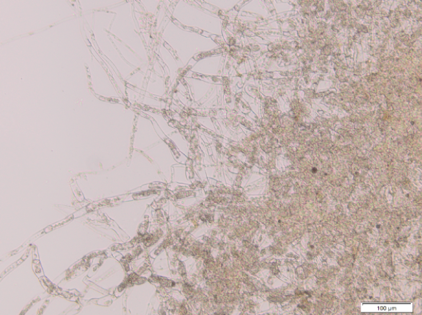Team:TU-Munich/Results/KillSwitch
From 2013.igem.org
(Difference between revisions)
(→Kill Switch) |
|||
| Line 11: | Line 11: | ||
[[File:TUM13_PartsRegistryKillSwitch.png|thumb|center|750px| '''Figure 1''': [http://parts.igem.org/wiki/index.php?title=Part:BBa_K1159118 Registry entry] of the PhyB/PIF6 version of the Kill Switch, BBa_K1159118]] | [[File:TUM13_PartsRegistryKillSwitch.png|thumb|center|750px| '''Figure 1''': [http://parts.igem.org/wiki/index.php?title=Part:BBa_K1159118 Registry entry] of the PhyB/PIF6 version of the Kill Switch, BBa_K1159118]] | ||
| + | |||
| + | ==Transformation of the large DNA constructs== | ||
| + | |||
| + | moss -> no homologuos regions | ||
| + | bacteria -> codon usage | ||
| + | |||
| + | ==Level of promoter activity== | ||
[[File:PBI_376_f1.gif|thumb|right|500px| '''Figure 2''': Comparative expression performance of different constitutive mammalian and plant promoters in Physcomitrella patens, [[http://www.ncbi.nlm.nih.gov/pubmed/19021876 Gitzinger et al., 2009]]]] | [[File:PBI_376_f1.gif|thumb|right|500px| '''Figure 2''': Comparative expression performance of different constitutive mammalian and plant promoters in Physcomitrella patens, [[http://www.ncbi.nlm.nih.gov/pubmed/19021876 Gitzinger et al., 2009]]]] | ||
| + | ==Photosensitivity== | ||
[[File:TUM13_Foto_Labpics2.jpg|thumb|right|500px| '''Figure 3''': Working with the photosensitive protoplasts]] | [[File:TUM13_Foto_Labpics2.jpg|thumb|right|500px| '''Figure 3''': Working with the photosensitive protoplasts]] | ||
| Line 25: | Line 33: | ||
| - | + | ||
| - | + | ||
| - | + | ||
| - | + | ||
==References== | ==References== | ||
Revision as of 22:06, 28 October 2013
Kill Switch
The Kill Switch mechanism is the most complex and ambitious aspect of our project on the protein level. The DNA constructs are very large and even exceed the Part Registry´s frame (Fig. 1). For details on its design and function see here. We were very excited to start experimenting with the killswitch moss. However, when we opened the redlight filter foil, we found none of the allegedly transgenic moss lines had survived. There is a variety of possible reasons for this outcome that need to be discussed in order to improve our approach.
Transformation of the large DNA constructs
moss -> no homologuos regions bacteria -> codon usage
Level of promoter activity
File:PBI 376 f1.gif
Figure 2: Comparative expression performance of different constitutive mammalian and plant promoters in Physcomitrella patens, http://www.ncbi.nlm.nih.gov/pubmed/19021876 Gitzinger et al., 2009
Photosensitivity
[http://www.plant-biotech.net/paper/CurrGenet_2003_hohe.pdf Hohe et al., 2003] "Targeted gene-knockout in Physco" paper
References
 "
"








AutoAnnotator:
Follow us:
Address:
iGEM Team TU-Munich
Emil-Erlenmeyer-Forum 5
85354 Freising, Germany
Email: igem@wzw.tum.de
Phone: +49 8161 71-4351